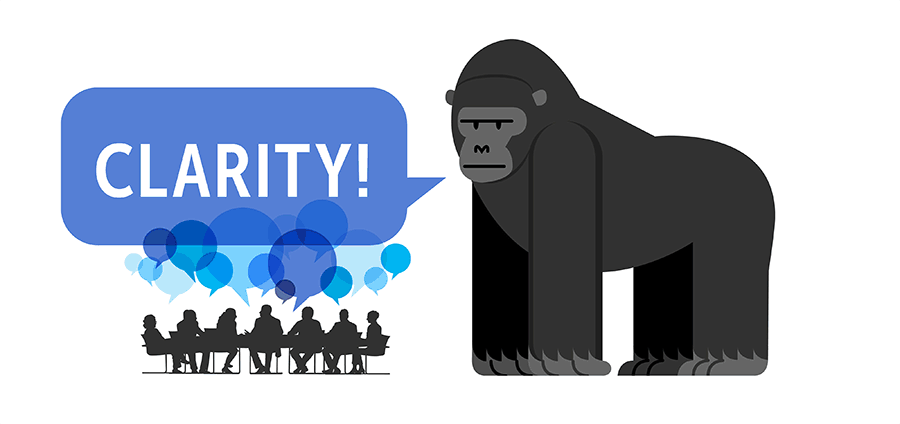Putting the Mystery in Life Science Marketing
By David Chapin
– Second in a series –
In my previous post, I talked about how most life science marketing is less than adequate (stinks), due primarily to the scientist’s need for Clarity and completeness.
I introduced three key characteristics that, much like a funnel, make scientists want to become scientists:
- The search for answers
- The need to classify
- An obsession with details
I also introduced the idea that most effective communication in life science marketing lives somewhere on the Clarity vs. Mystery scale — a concept embraced by Chip Kidd. And that too much Clarity is killing life science marketing. Now let’s look at how Mystery can revive our stale, often boring, overly detailed messages.
Let me start with a story.
Doing a brand audit for a client recently, I found that they had some of the most consistently branded work I’ve ever seen. On a piece-by-piece basis, the work was well designed—maybe a little dated—but not bad. But when it came time to “grade” the work, I gave it a “D” and explained to the client that the design of their materials was poor—very poor—with the potential to drive away potential clients.
But wait. Isn’t consistency one of the main tenets that marketers rely on to get their messages across? Yes, it is.
But let’s just say our client used consistency like a hammer. Their website is monotonous to the point that it has real usability problems. Rather than offering up unique and intriguing teasers that invite engagement, the rotating content in the homepage banner changes almost imperceptibly, as the colors and content of each slide are so similar. Interior pages have headers that are the same size and in the same location as the homepage banner – so, other than the fact that you clicked through to a different page, there are no visual clues to tell you that you’re no longer on the the homepage. Furthermore, these interior pages contain visually similar content (to each other and to the homepage) and the layout of interior pages is the same as the layout of the homepage. If you take the time to read through the site, you’ll find that much of the site’s content is clearly written and unique. However, since each piece of content is presented with such visual uniformity, you’d have to force yourself to read through the monotony to find the nuggets that matter to you.
Expecting our users to be committed enough to read ALL of our content in order to get to the useful nuggets is not a good game plan.
When I asked about the intent of the design, the client said “we wanted to provide as much information as possible in a clear, concise way.” They were trying to be clear and they felt that Clarity would be enhanced if everything were extremely consistent as well.
Where’s the Mystery? Where’s the intrigue? The answer? It’s buried in too much consistency, and too much content that’s clamoring for emphasis. And in this case, where Clarity is the stated goal, overwhelming consistency has killed Clarity as well. If we try to emphasize everything, we emphasize nothing. Everything cannot be our most important point.

The myriad salad options at an Australian supermarket, from a NY Times article on how too many choices trouble consumers.
Without variety it’s difficult to make a choice. Analysis-paralysis is a real thing. Simply removing a third of the content and adding some visual interest and structure would improve this site immensely. But why stop there?
It runs counter to scientists’ need to classify and their obsession with details, but to engage our audience, we need to step back and out of the funnel, all the way to why we ask questions: wonder and Mystery. What if we gave our mostly scientific audiences problems to solve? What if we offered up our content as compelling, mini-mysteries?
What if we asked our audience intriguing questions instead of trying to give them all the answers?
If we agree that a scientist is driven to solve a problem, that the idea of Mystery and wonder is at the core of why they became scientists in the first place, then let’s use life science marketing to engage our audiences with puzzles and questions – with Mystery. And who doesn’t love a good mystery? – let’s not forget that our audiences, in most cases, include non-scientists as well. Let’s start a conversation instead of cutting it off by responding to every possible question before it’s even been asked. That’s really all that marketing is supposed to do in the first place – open a line of communication and create dialogue with your audiences.
In my final post in this series, I’ll take a look at ways that we can strike a balance of Mystery and Clarity to create compelling, high-performance life science marketing.







